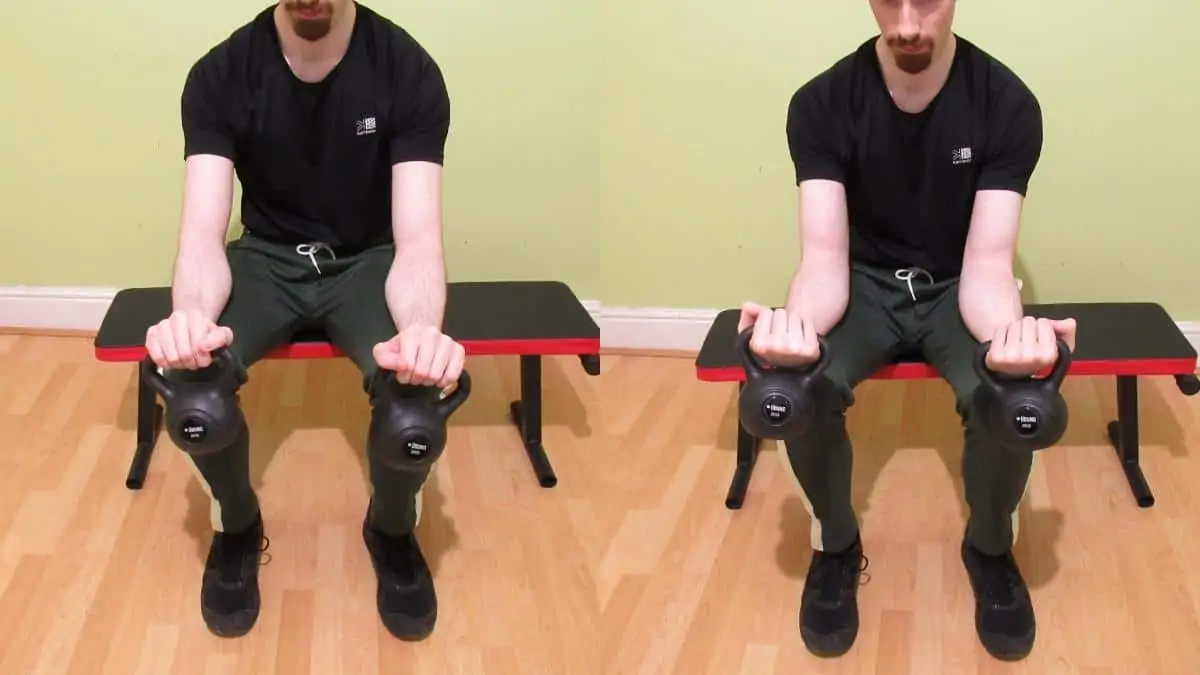The forearm anatomy responds well to a variety of different exercises since it has so many functions. So if you’re bored of using barbells and dumbbells for all of your forearm exercises, then check out these fantastic kettlebell forearm exercises and workouts for a new challenge.
I’m warning you, though, your grip is going to be taxed like never before. And your lower arms will undoubtedly feel the burn after only a few reps on each move from our kettlebell forearm workouts, which I’ll walk you through step-by-step in a few minutes.
Related post: kettlebell hitting your forearm
Best kettlebell forearm exercises
These kettlebell forearm exercises will add muscle to your forearms while simultaneously improving your grip strength. Obviously, you can do these drills at a gym. But with even a single kettlebell, you can get a great workout from the comfort of your own home, too. [1]
1. Forearm kettlebell curl
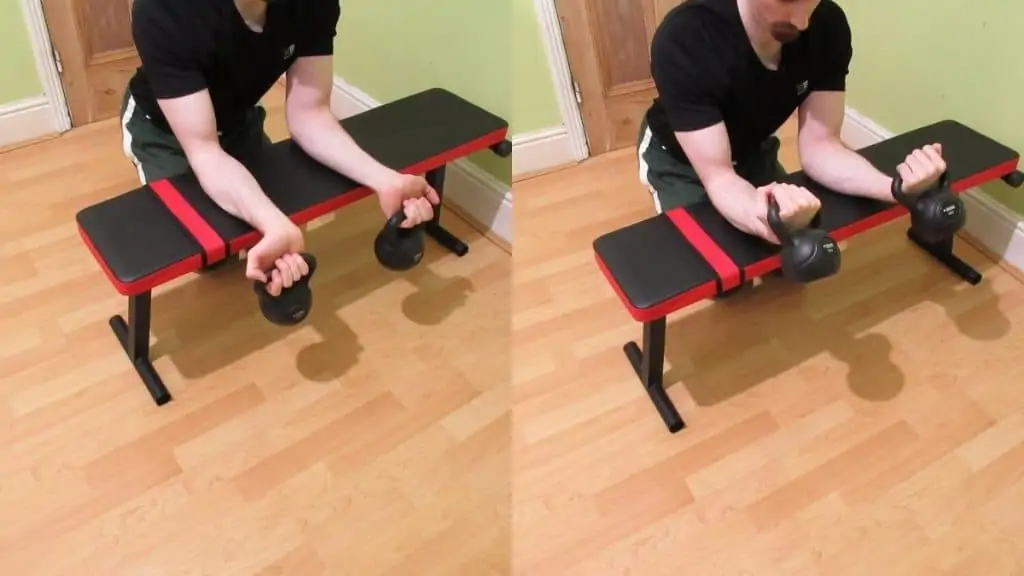
If you’re fed up with regular standing wrist curls, then give the forearm kettlebell curl a try.
You can do this move stood up for convenience or over a bench to improve your mind-muscle connection, which also limits the involvement of secondary muscles.
Begin by holding a kettlebell with both hands behind your back. Then, curl the kettlebell upwards and squeeze your forearm flexors. Hold the contraction for a second and then lower the kettlebell, allowing it to stretch out your lower arms in the process.
For more variation, you can also do this drill with the kettlebell positioned in front of your body.
But an even better variation is where you hold the round part of a (smallish) kettlebell and then do forearms curls with that, preferably over a bench or with your forearm resting on your thigh while your torso is bent over.
While this variation might feel very challenging at first, few kettlebell forearm exercises work your grip muscles to such a large extent.
Alternatively, if you just want a simple drill to perform, then you can do the kettlebell wrist curl with your forearm resting on a weight bench.
Related: seated dumbbell palms down wrist curl
2. Reverse forearm kettlebell curl
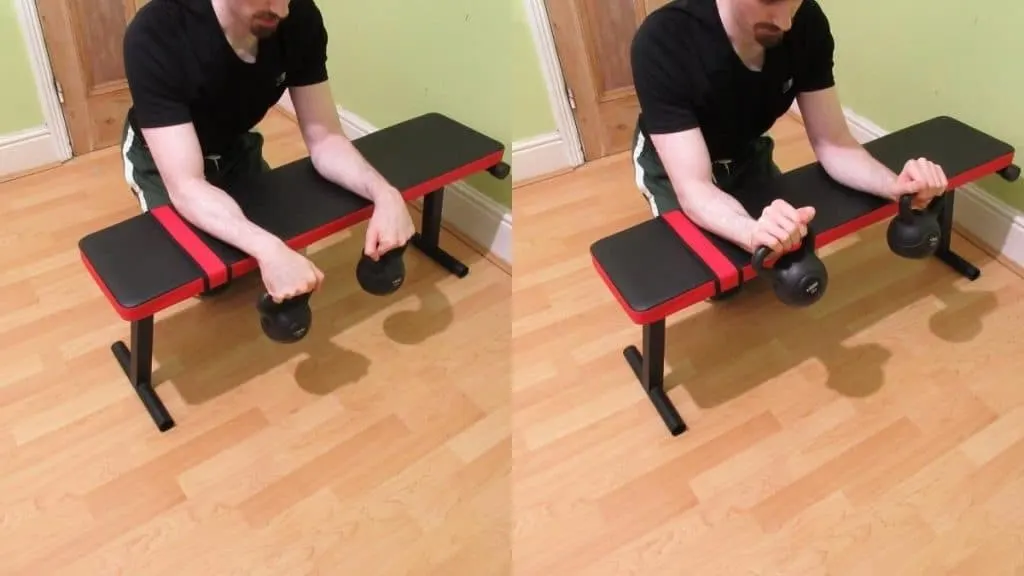
Performing as many standing reverse forearm curls as regular wrist curls is crucial because you don’t want huge flexors and then weak forearm extensors.
Begin by holding a light kettlebell in front of your body with both hands, elbows fully locked out, and palms facing towards you. Initiate the rep by extending your wrists away from your body and then squeezing the tops of your forearms.
Hold the contraction and then lower the weight under control. The range of motion (ROM) is small, so use high reps. Sets of 15-20 are ideal for getting enough time under tension.
If you’re feeling strong, you can also do this drill (and the exercise above) with one arm at a time.
You simply kneel next to a bench and hold the kettlebell with an overhand grip while resting your forearm on the weight bench. From there, you bend your wrist to lower the weight towards the floor and then bring it back up by extending your hand towards the ceiling.
Read more: shoulder and forearm exercises │forearm exercises for women
3. Reverse arm curl
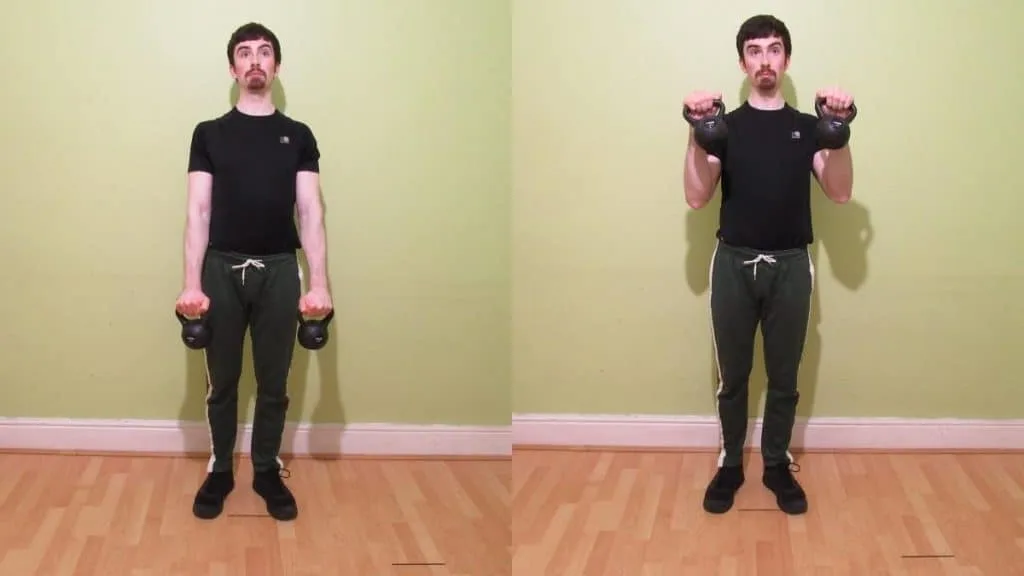
I always include reverse curls in my bicep and forearm workout routines because they tax the brachioradialis, which, although technically a forearm muscle, improves the appearance of the arms as a whole from every angle.
Hold two kettlebells (or train one arm at a time) with an overhand grip. Then, while keeping your upper arms stationary, curl the weights towards you by flexing your elbows. Bring the weight past where your upper and lower arm makes a 90-degree angle for the best contraction. Finish the rep by lowering the kettlebell under control until your elbows are almost fully locked out.
Use a thumbless grip for even more brachioradialis activation.
Related: Tricep exercises with kettlebells
4. Hammer curl
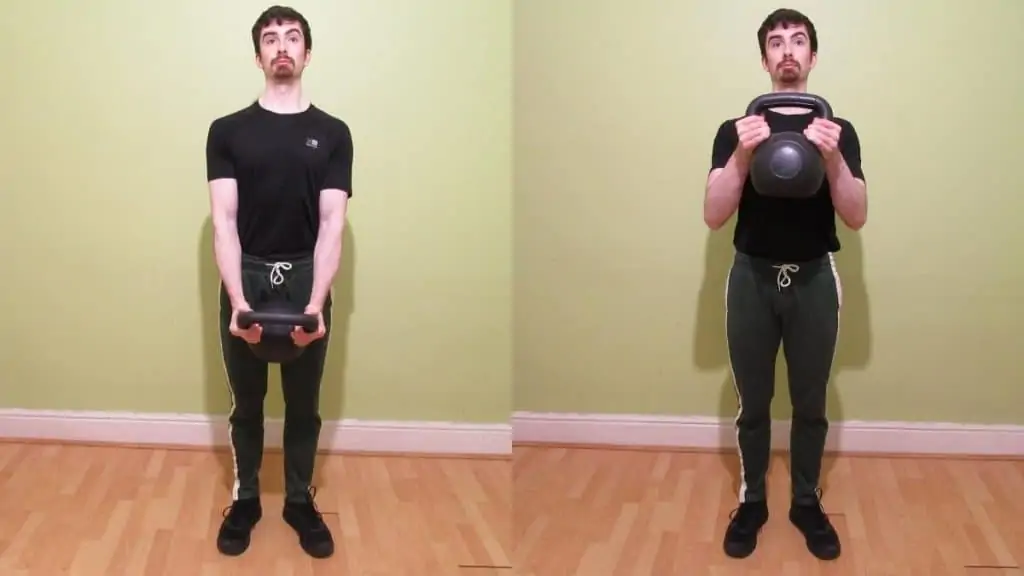
Doing a hammer curl with a kettlebell will not only work your biceps and brachioradialis, but it’ll also challenge radial deviation (see exercise #5) too.
Start by holding a kettlebell with a neutral grip. Then, curl it upwards by flexing your elbow until you surpass 90-degrees. Hold the contraction for a split second, and then slowly lower the weight under control. Start light and do 3-4 sets of 8-12 reps.
See also: body weight forearm exercises │resistance band forearm workout
5. Radial deviation
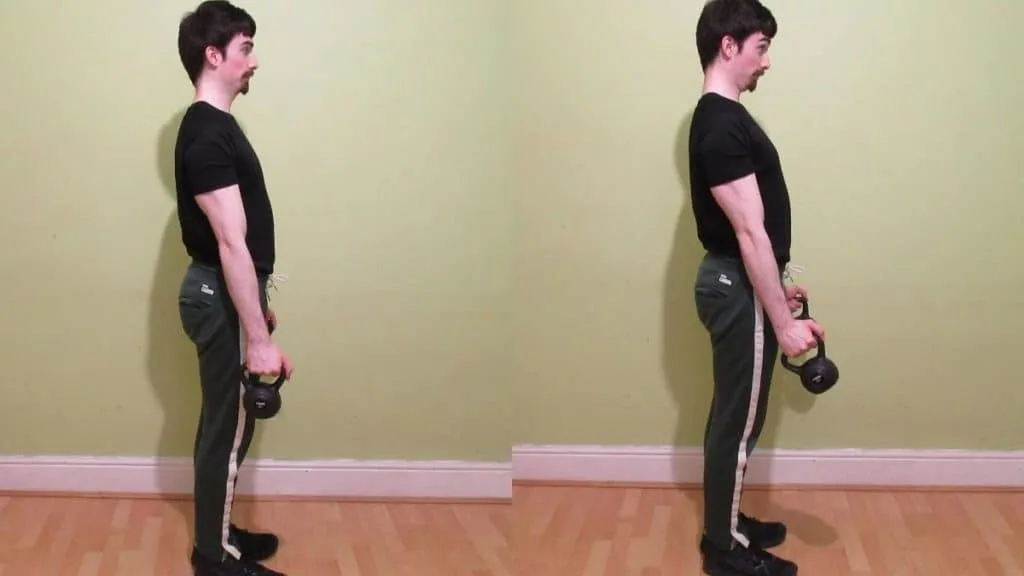
You can also do this drill in a traditional forearm dumbbell workout. But you can just as easily do it with a kettlebell. Just be sure to start light and stick with high reps because the muscles we’re about to train are very small compared to the bulk of the forearm flexors.
Hold a kettlebell with a neutral hand position, elbows fully locked out. Then, while keeping your arm as straight as possible, curl your hand (or, to say it another way, flex your wrist only) towards your body. Then lower the weight back down and repeat the motion for 12-20 reps.
This exercise is simple to execute, but it requires excellent form. While it won’t harm to maintain a small elbow bend, you’ll find it easier to train this specific function—radial deviation—while using really strict form.
6. Ulnar deviation
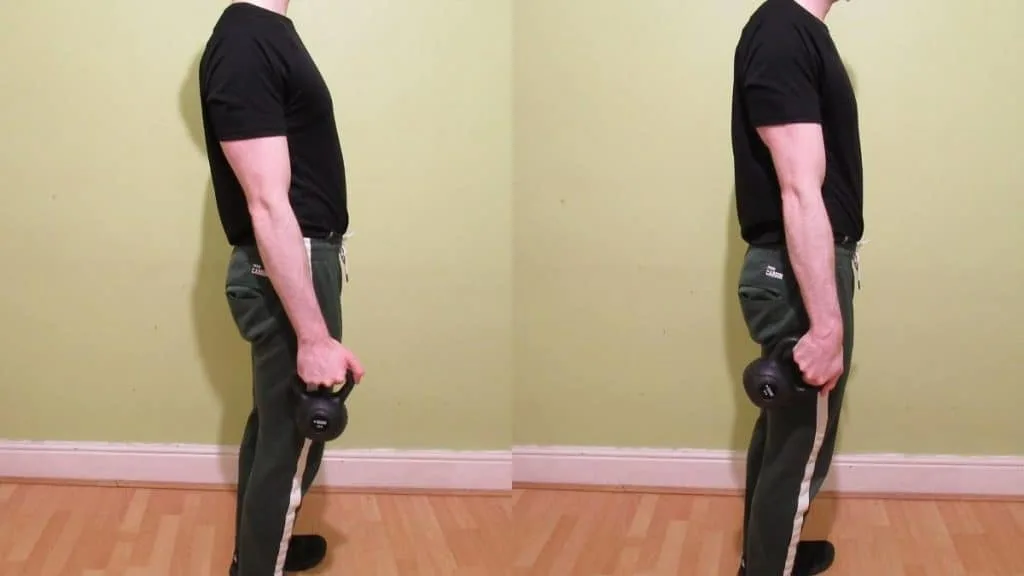
Ulnar deviation is the opposite of radial deviation. So once again, hold a kettlebell in a neutral hand position. This time, however, you’re going to flex your wrist backward, which is to say move your pinky towards your forearm. From there, simply lower the weight under control and repeat for 2-3 sets of 12-20 reps.
You could always do the above two drills at the end of a bicep tricep forearm workout to finish off the lower arms.
7. Farmer’s walks
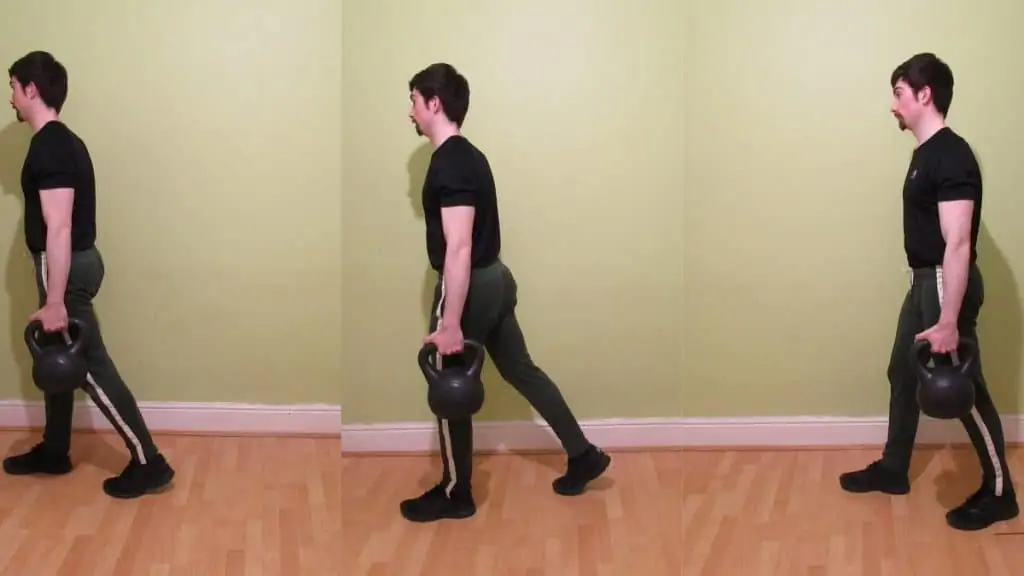
Let’s see what your grip is really made of. If you want to develop all-round grip strength, cardiovascular conditioning, massive traps, and mental toughness, then there are few better exercises for the job than farmer’s walks.
Kettlebells make the setup really easy for us, too. And they’re known for developing impeccable cardiovascular conditioning. [2]
Hold 2 heavy kettlebells of equal weight in each hand. Then, while maintaining good posture, walk with the kettlebells up and down the gym for 30-45 seconds. Do this 3-4 times for a killer kettlebell forearm workout.
Alternatively, just hold the kettlebells in a regular standing position if you don’t want to do the cardio (no judgment).
You can also perform this drill with one kettlebell at a time in order to work on your core stability. Just note that you’ll need to go significantly lighter if you decide to try this oblique burning variation.
Read more: forearm exercises at home │backpack forearm exercises
Sample kettlebell forearm workout

1: Farmer’s carry — 4 x 30-45 second holds
2A: Forearm kettlebell curl — 3 x 10-12 reps
2B: Reverse forearm kettlebell curl — 3 x 15-20 reps
3: Reverse curl — 4 x 8-12 reps
4A: Radial deviation — 2 x 12-15 reps
4B: Ulnar deviation — 2 x 12-15 reps
The verdict on kettlebell forearm training
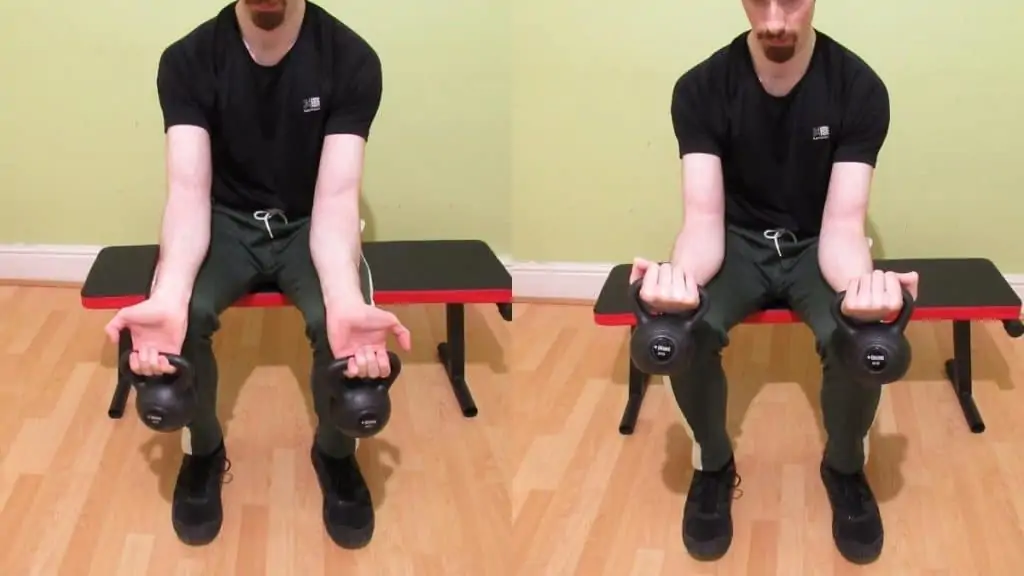
There are few pieces of gym equipment that are as functional as kettlebells. [3] From full-body swings to specific kettlebell forearm exercises, they really are a one–of–a–kind training tool.
Overall, if you want to train your grip and increase your lower arm strength, then I highly recommend incorporating kettlebells Into your training. The above kettlebell forearm workout will give you some ideas. It’s also very time efficient.
However, you can also pick and choose from the best exercises above in order to create your own personalized routine. And with that said, I hope that this article gave you plenty of inspiration for your future workouts.
References
- Vancini, R. L., Andrade, M. S., Rufo-Tavares, W., Zimerer, C., Nikolaidis, P. T., & de Lira, C. A. B. (2019). Kettlebell Exercise as an Alternative to Improve Aerobic Power and Muscle Strength. Journal of Human Kinetics, 66(1), 5–6. https://doi.org/10.2478/hukin-2018-0062
- Chan, M., MacInnis, M. J., Koch, S., MacLeod, K. E., Lohse, K. R., Gallo, M. E., Sheel, A. W., & Koehle, M. S. (2020). Cardiopulmonary Demand of 16-kg Kettlebell Snatches in Simulated Girevoy Sport. Journal of Strength and Conditioning Research, 34(6), 1625–1633. https://doi.org/10.1519/jsc.0000000000002588
- Otto, W. H., Coburn, J. W., Brown, L. E., & Spiering, B. A. (2012). Effects of Weightlifting vs. Kettlebell Training on Vertical Jump, Strength, and Body Composition. Journal of Strength and Conditioning Research, 26(5), 1199–1202. https://doi.org/10.1519/jsc.0b013e31824f233e

